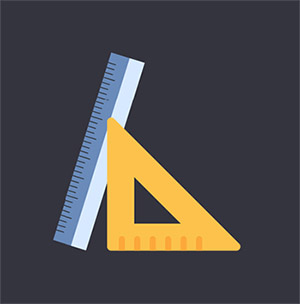Let's accept there are numerous well-developed Procurement organizations doing progressive work across the scope of the discipline – from basic buying through Supplier Relationship Management (SRM). Let's say this is about 20 % of all Procurement groups. Let's also accept that many of these same groups are likely responsible for about 80% of spending in the United States - both direct and indirect. Applying the 80/20 rule, these same organizations are led by the top twenty percent of Chief Procurement Officers (CPOs) in the U.S.
If you agree with this premise, you'll accept that the remaining 20% of spend is handled by the remaining 80% of the Procurement groups.
Now let's look at Procurement group priorities over the past several years. The top priorities have been and will probably continue to be cost reduction - a.k.a. savings, and collaboration - a.k.a. some form of stakeholder/supplier relationship management. Next, let's take a close look at the dichotomy of these top two priorities. Most Procurement organizations are very capable when it comes to analyzing, negotiating and contracting – the hard skills.
Most aren't so good when it comes to relationship management – the soft skills, or abilities. This means Procurement professionals are good at finalizing a contract. However, when it comes to implementing the contract to realize the savings – things unravel.
Research shows that for the top performing Procurement groups, the 20%, the realized contractual savings is about 70%. This doesn't take into account if any expected value-adds, or other improvements promised, were attained. Looking at the other 80% - for the middle of the road performers the savings attainment is around 50%. It's worse for the stragglers.
Reports suggest many senior executives would like to see more stakeholder/supplier collaboration. They expect it will deliver innovations, competitive advantage, etc. The CEO/CFO sets objectives for the CPO based on savings first and collaboration second. The first is a “gimme”. It is what Procurement tells us it does best. The second is a must to accomplish the first. As a CPO, you may be relying on your users and suppliers to cooperate and deliver the forecasted savings while hoping your team doesn't get in the way. This statement may be harsh, but in many cases, it's reality.
So, what's a CPO to do? If you're in the top twenty, keep leading the way. If you in the other 80%, the answer is simple – you need to develop your group's relationship abilities. Despite the preference to train on hard skills, invest in training for relationship abilities. These abilities aren't easily learned. They're typically inherent. You know the “EQ” (Emotional Intelligence Quotient) stuff. You're trying to change behaviors. This can be difficult to do with established Procurement professionals.
Don't let it deter you. Keep in mind relationship management = realized savings.
Other options:
- Use cross functional teams for large sourcing initiatives and expect that some members of the team, the users, will drive the post contract, relationship-oriented activities to deliver the strategy
- Hire with attention to relationship abilities and expect that Procurement skills can be developed
- Bring in experienced sales professionals. Hire them or transfer them in. They know the flip side. They understand the buyer/seller process and can bring unique abilities to your group.
You might be thinking that automating the process will fix things. Not a bad thought. Supplier Information Management tools can help but be careful. Technology alone isn't the answer. Evidence-based SRM relies on an appropriate synthesis by the Procurement professional. In the hands of a judgmental professional, it can complicate matters.
Nope, by definition, a relationship is the way in which two or more people or groups regard and behave towards each other. If you want to deliver those required savings improvements, then you need to accept that relationships are priority 1A. Otherwise, you're painting yourself into a corner.
SC
MR


Latest Supply Chain News
- Three frameworks for creative problem-solving in supply chain
- Mitigating geopolitical uncertainty: 4 essential tactics for industrial CSCOs
- Supply chain strategy for medical devices: A Q&A with industry expert Sanjay Gupta
- Inventory Management and the Supply Chain: Outlook 2025
- How technological innovation is paving the way for a carbon-free future in logistics and supply chains
- More News
Latest Podcast

 Explore
Explore
Latest Supply Chain News
- Three frameworks for creative problem-solving in supply chain
- Mitigating geopolitical uncertainty: 4 essential tactics for industrial CSCOs
- Supply chain strategy for medical devices: A Q&A with industry expert Sanjay Gupta
- Inventory Management and the Supply Chain: Outlook 2025
- How technological innovation is paving the way for a carbon-free future in logistics and supply chains
- Parcel shipping spend: The untamed holdout in today’s supply chains
- More latest news
Latest Resources

Subscribe

Supply Chain Management Review delivers the best industry content.

Editors’ Picks





